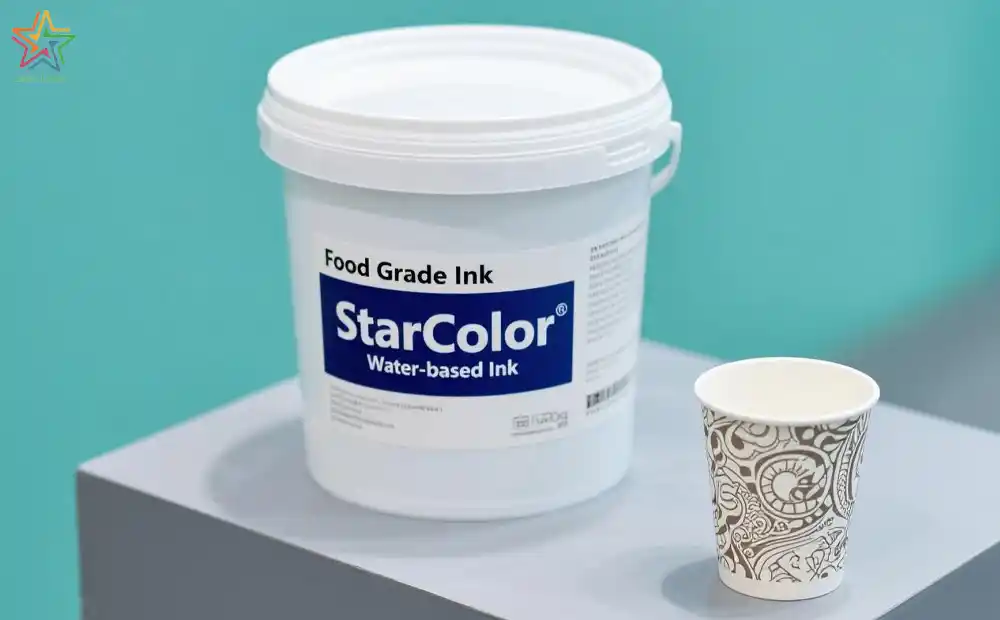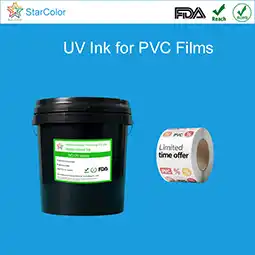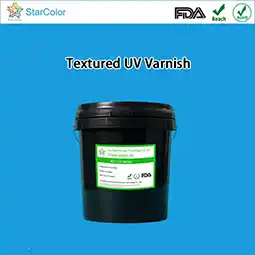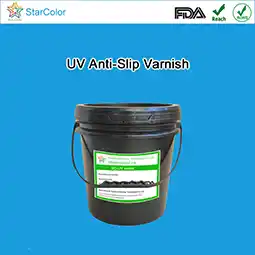Key Tests for Food-Safe Water-Based Flexo Ink Performance
Date: Aug 25 2025 From: Star Color Views:
According to industry statistics, about 20% of food packaging quality issues are related to non-compliance of ink safety performance, with excessive migration and harmful substance residues being the main risk factors. This article breaks down the key testing methods for evaluating the food safety performance of water-based flexographic inks from aspects such as migration safety and raw material compliance, providing a technical guide for ink selection.
1. Migration Testing
Migration is the core indicator for assessing the food safety of inks. It refers to the amount of harmful substances in inks that can transfer into food through processes such as permeation or volatilization during contact. This test is directly associated with human intake risk and requires strict simulation experiments and instrumental analysis.
1.1 Heavy Metal Migration Testing
-
Purpose: To detect the migration of heavy metals such as lead (Pb), cadmium (Cd), mercury (Hg), and arsenic (As) from the ink into food to prevent neurological and organ damage caused by long-term intake.
-
Standards: GB 4806.10-2022 National Food Safety Standard for Food Contact Coatings and Coatings; EU 10/2011 Regulation on Plastic Materials and Articles Intended to Come into Contact with Food.
-
Limits: Migration limits — Pb ≤ 0.01 mg/kg, Cd ≤ 0.005 mg/kg, Hg ≤ 0.001 mg/kg, As ≤ 0.01 mg/kg; total migration ≤ 0.03 mg/kg.
1.2 Volatile Organic Compounds (VOC) Residue and Migration Testing
-
Purpose: To detect the residues and migration of organic solvents (e.g., ethanol, propylene glycol methyl ether) in inks that have not fully evaporated, preventing odor and irritation hazards.
-
Standards: GB 38507-2020 Limits for Volatile Organic Compounds in Inks; FDA 21 CFR 175.300 Resinous and Polymeric Coatings for Food Contact.
-
Limits: VOC residue in water-based flexographic inks ≤ 50 g/L; total VOC migration into food simulants ≤ 0.5 mg/kg, individual compounds ≤ 0.1 mg/kg.
1.3 Specific Migrants Testing
-
Purpose: To test specific high-risk substances that may be present in inks, such as plasticizers, formaldehyde, and phenolic compounds, to avoid endocrine disruption or carcinogenic risks.
-
Key Substances & Methods:
-
Phthalates (plasticizers): Detected by GC-MS after simulant immersion and extraction; total migration ≤ 0.1 mg/kg (EU REACH).
-
Formaldehyde: Detected by HPLC with derivatization; migration ≤ 0.15 mg/kg (GB 9685).
-
Bisphenol A (BPA): Applicable to inks containing epoxy resins; detected by LC-MS/MS; migration ≤ 0.05 mg/kg (EU 10/2011).
-

2. Raw Material and Production Process Compliance Testing
Evaluating food safety performance not only relies on finished product testing but also requires traceability of raw materials and production processes to establish a “whole-chain risk control” system.
2.1 Raw Material Compliance Audit
-
Purpose: To verify whether ink raw materials meet food contact material requirements and to prevent the use of prohibited substances under standards such as EU REACH and China GB 9685.
-
Core Testing:
-
Raw Material List Audit: Require suppliers to provide a Safety Data Sheet (SDS) for each batch, confirming the absence of banned substances such as phthalates (DEHP, DBP) and polycyclic aromatic hydrocarbons (PAHs).
-
Purity Testing: Conduct purity analysis on key raw materials (resins, pigments); resin purity ≥ 99%, harmful impurities (Pb, As) in pigments ≤ 0.001%.
-
Compliance Certification Verification: Confirm raw materials are certified by FDA, EFSA, or other authorities for food contact (e.g., FDA 21 CFR 175.300).
-
2.2 Production Process Contamination Control Testing
-
Purpose: To detect whether inks are contaminated by harmful substances due to inadequate equipment cleaning or unsanitary environments during production.
-
Key Testing Points:
-
Equipment Residue Detection: Check for residual components from previous ink batches (e.g., heavy metals, solvents) on equipment surfaces before switching production; residue ≤ 0.01 mg/cm².
-
Environmental Microbial Testing: Airborne settleable bacteria ≤ 10 cfu/plate (diameter 90 mm, 30-min exposure); total colony count on floors and countertops ≤ 10 cfu/cm².
-
Packaging Material Safety: Ink packaging drums must pass food-grade testing (migration and microbial testing) to avoid contamination.
-
3. Case Study: Food Safety Testing Practice of a Packaging Company
A company located in central China purchased StarColor water-based flexographic inks for baby food packaging, which had to pass strict food safety tests. The testing process and results were as follows:
-
Migration Testing:
-
Heavy metals: Pb and Cd not detected.
-
VOC migration: ethanol migration 0.05 mg/kg; no other solvents detected.
-
Specific migration: phthalates not detected; formaldehyde 0.03 mg/kg.
-
-
Biological Testing:
-
Acute oral toxicity LD50 > 10,000 mg/kg (essentially non-toxic).
-
Skin irritation test showed no erythema or edema, classified as non-irritant.
-
-
Scenario Simulation:
-
After accelerated migration (70°C for 2 days), all indicators remained ≤ 60% of the limits.
-
After 500 rubs, ink transfer was 0.02 mg/cm², meeting requirements.
-
The ink successfully passed the tests and was applied to baby food packaging without any safety incidents or complaints.
Conclusion
Evaluating the food safety performance of water-based flexographic inks can be achieved by quantifying harmful substance risks through migration testing and reducing risks from the source via raw material and process control.
When selecting a water-based flexographic ink supplier, choose those certified by FDA, REACH SVHC, RoHS, and other authoritative standards, and request complete test reports.
Only through scientific and comprehensive testing can water-based flexographic inks be ensured to be both eco-friendly and safe for use in food packaging, safeguarding consumer health.
 RU
RU EN
EN CN
CN















